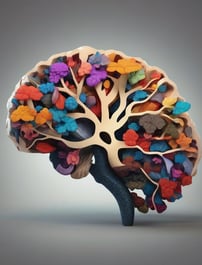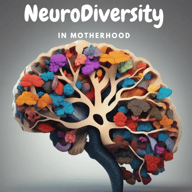"Neurodiversity," "Neurodivergent," "Neurotypical," "Neuroatypical"


The terms "neurodiversity" and "neurodivergent" are often used in discussions about mental health and human diversity, but it is essential to understand that they represent distinct concepts.
What is Neurodiversity?
Neurodiversity, a celebration of the wide variety of human neurological variations, empowers us all. It encompasses neurotypical and neurodivergent minds, recognising that all neurological functioning, in its unique and valuable way, brings contributions to society that we should all appreciate and respect.
What Does it Mean to be Neurodivergent?
Individuals are considered neurodivergent when their neurological development and functioning significantly differ from established social norms. This can include a wide range of experiences, perceptions, and interactions with the world, highlighting the differences in cognitive processes, perceptions, and interactions.
The takeaway is that neurodivergent individuals may include neuroatypical individuals. Still, this term can also embrace broader cognitive variations, recognising the validity of different ways of thinking.
Neurotypical and Neuroatypical
In addition to neurodiversity and neurodivergence, the terms "neurotypical" and "neuroatypical" also play a crucial role in discussing neurological variations.
Neurotypical: This term describes individuals whose neurological characteristics align with society's typical or normative characteristics. Neurotypical individuals often exhibit neurological development that follows the patterns established by conventional social norms, facilitating their interaction and adaptation in social, educational, and professional environments. For example, a neurotypical individual may find navigating social situations more manageable and understanding implicit social cues, which can benefit various interpersonal interactions.
Neuroatypical refers to those whose neurological development does not fit typical development expectations. While neurodivergent and neuroatypical indicate a divergence from typical neurological functioning, "neuroatypical" may specifically highlight the differences in societal norms, whereas "neurodivergent" encompasses a broader range of cognitive variations. Both terms advocate for understanding and accepting the diversity in human brain functioning.
The takeaway is that neuroatypical emphasises the deviation from what is considered "typical"; the term can include a range of conditions, such as autism spectrum disorder, ADHD, dyslexia, and other neurological differences.
Conclusion: Understanding neurodiversity and the different manifestations of human neurodevelopment is essential; it's a call to action to promote a more inclusive society. Understanding the terms "neurodiversity," "neurodivergent," "neurotypical," and "neuroatypical" helps us perceive human neurodevelopmental diversity, giving us the knowledge and confidence that everyone can contribute, regardless of how their brains function.
Let's cultivate an environment within this community, Neurodiversity in Motherhood, where all mothers and children, regardless of their neurodevelopment, can feel accepted, respected, and valued.
Together, we can build a more inclusive and connected community.
